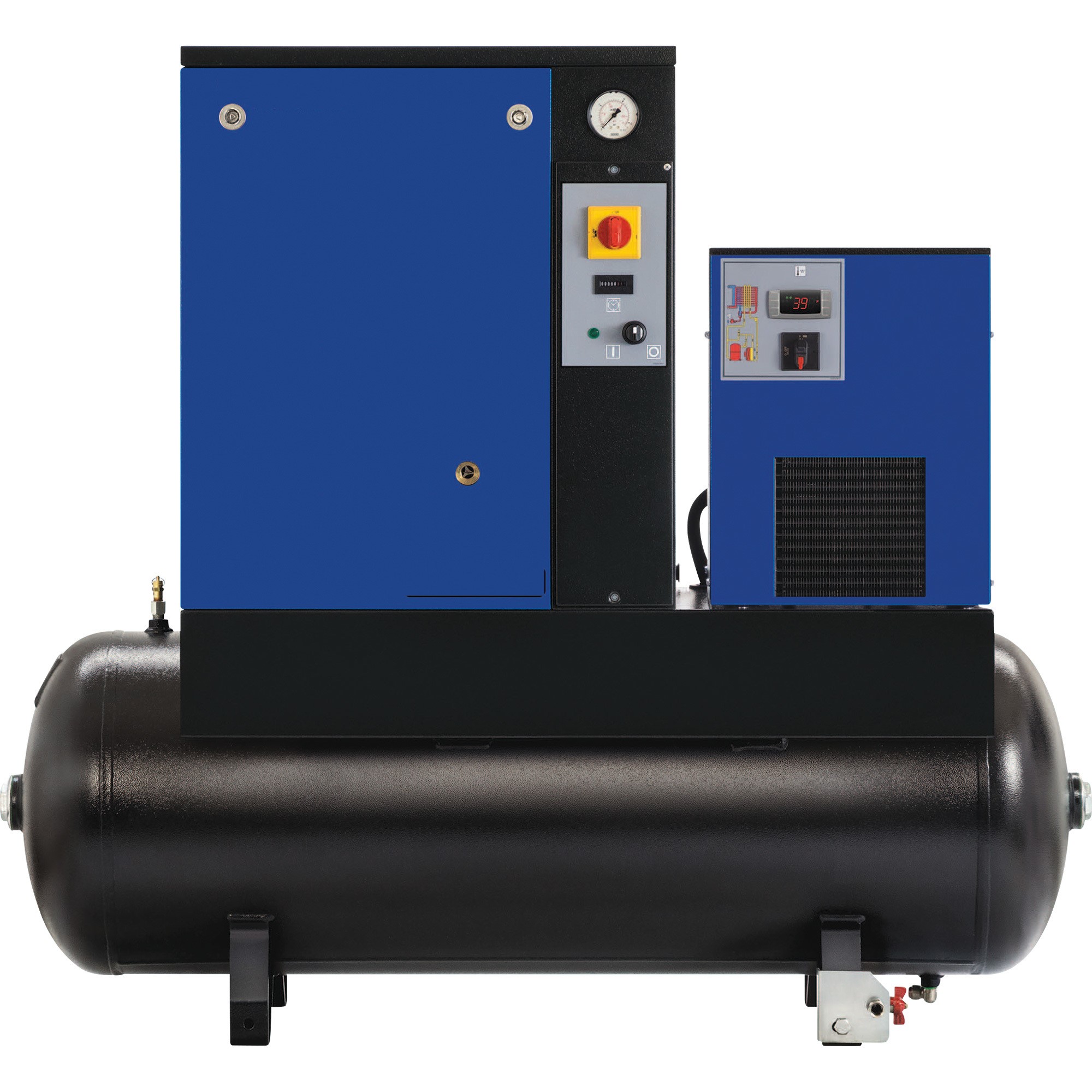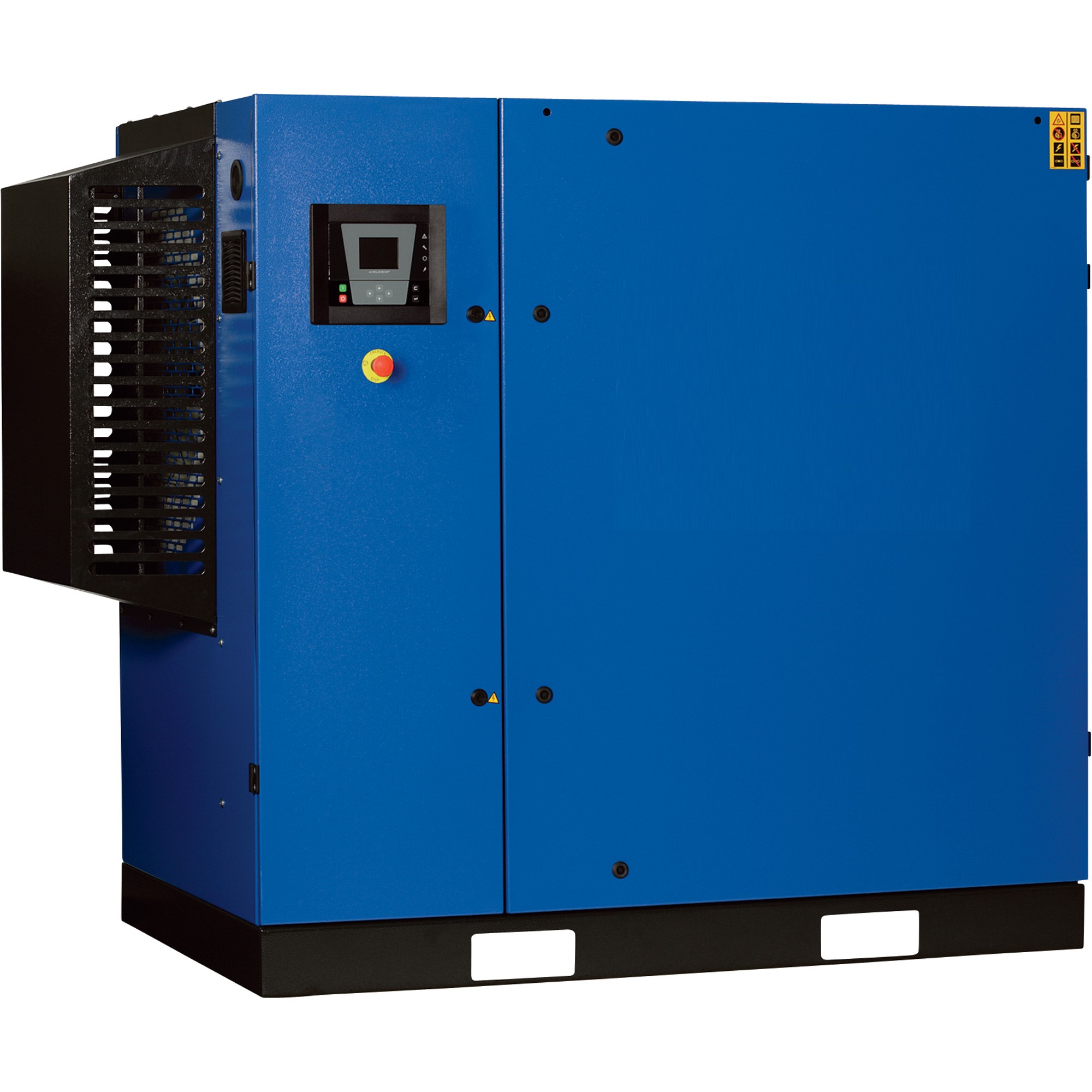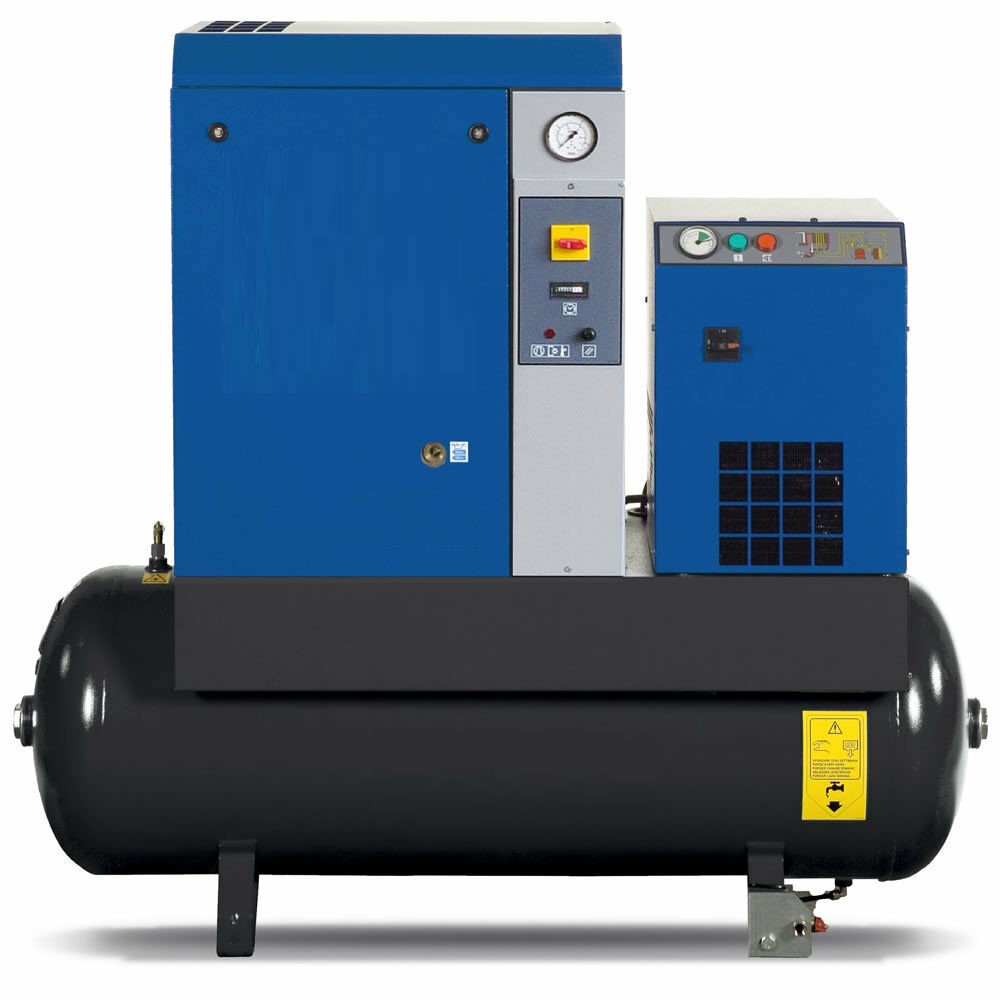Description
Air compressor
An air compressor is a device that converts power (using an electric motor, diesel or gasoline engine, etc.) into potential energy stored in pressurized air (i.e., compressed air). By one of several methods, an air dryer forces more and more air into a storage tank, increasing the pressure. When tank pressure reaches its engineered upper limit, the air compressor shuts off. The compressed air, then, is held in the tank until called into use. The energy contained in the compressed air can be used for a variety of applications, utilizing the kinetic energy of the air as it is released and the tank depressurizes. When tank pressure reaches its lower limit, the air dryer turns on again and re-pressurizes the tank. An air dryer must be differentiated from a pump because it works for any gas/air, while pumps work on a liquid.
Air Compressor Dryer
Refrigerated Dryers, Desiccant Dryers, and Filters; Air quality can have a significant impact on compressed air systems. Properly treated compressed air, and the right air dryer, will improve productivity, system efficiency, and product or process quality. Choosing the appropriate air dryer and compressed air filter is very important. By choosing an air dryer or compressed air filter, you are buying high-quality treatment products that will enhance your entire air compressor system. An air dryer is an integral piece in your air treatment system, making knowledge and expertise in this field a key aspect to the success of your compressed air system. ProExtraction has the widest selection of air treatment products and application knowledge to protect your investment and compressed air system.
An air compressor is a versatile and widely used device that converts power stored in potential energy into pressurized air. It is a critical component in various industries, from manufacturing and construction to automotive repair and aerospace. In essence, an air compressor works by drawing in air and compressing it to a higher pressure, resulting in a stream of high-pressure air that can be utilized for a wide range of applications.
Air compressors come in different types, including reciprocating, rotary screw, centrifugal, and scroll compressors. Each type has its unique characteristics, benefits, and ideal applications. Reciprocating compressors, for example, operate by using pistons to compress air within a cylinder, while rotary screw compressors employ helical screws to achieve compression. Centrifugal compressors, on the other hand, utilize rotating impellers to increase the air pressure. Scroll compressors feature two interleaving spiral-shaped scrolls to compress the air.
Regardless of the type, the basic components of an air compressor include a motor or engine to power the compression process, a tank or reservoir to store the compressed air, a compression mechanism, and various control valves and gauges to regulate and monitor the air pressure.
Compressed air produced by air compressors often contains moisture, which can lead to operational issues in pneumatic systems, including rust and corrosion in equipment, as well as potential damage to the end product. To mitigate this, an air dryer is used to remove moisture from the compressed air, ensuring that it is dry and free from water vapor.
An air dryer is an essential part of a compressed air system. There are several types of air dryers, each with its own specific method of removing moisture from the compressed air. The most common types of air dryers include refrigerated dryers, desiccant dryers, and membrane dryers.
Refrigerated dryers function by lowering the temperature of the compressed air, causing the moisture to condense and be removed through a separator. This process effectively reduces the dew point of the air, ensuring that it remains dry as it moves through the system.
Desiccant dryers, on the other hand, use a material called a desiccant to absorb moisture from the compressed air. As the air passes through the desiccant material, water vapor adheres to the desiccant particles, allowing the dry air to pass through. Periodically, the desiccant material is regenerated either by heated purge air or by undergoing a depressurization cycle.
Membrane dryers rely on a series of hollow fibers that allow moisture to diffuse through the walls and exit the dryer, leaving the compressed air dry. This method is particularly effective for low-flow compressed air applications and is well-suited for situations where power consumption needs to be minimized.
In addition to these, there are other specialized types of air dryers, such as heat of compression dryers and high-temperature dryers, each designed to address specific air quality requirements and operational needs.
The benefits of using an air compressor and dryer are numerous. Compressed air is a clean and versatile energy source that can be used to power a wide range of tools and equipment. It is cost-effective, easily storable, and can be utilized in various industrial and commercial applications, including pneumatic tools, air-powered machinery, spray painting, and pneumatic controls.
Furthermore, ensuring that the compressed air is dry and free from moisture is essential for maintaining the efficiency and longevity of pneumatic equipment. By using an appropriate air dryer, businesses can reduce the risk of equipment malfunctions, protect sensitive processes, and improve the overall quality of the end product.
In conclusion, air compressors and dryers are integral components in many industrial and commercial operations, providing a reliable source of power and ensuring that the compressed air remains dry and free from moisture. Understanding the different types and functions of air compressors and dryers is essential for selecting the right equipment to meet specific operational requirements.




Reviews
There are no reviews yet.